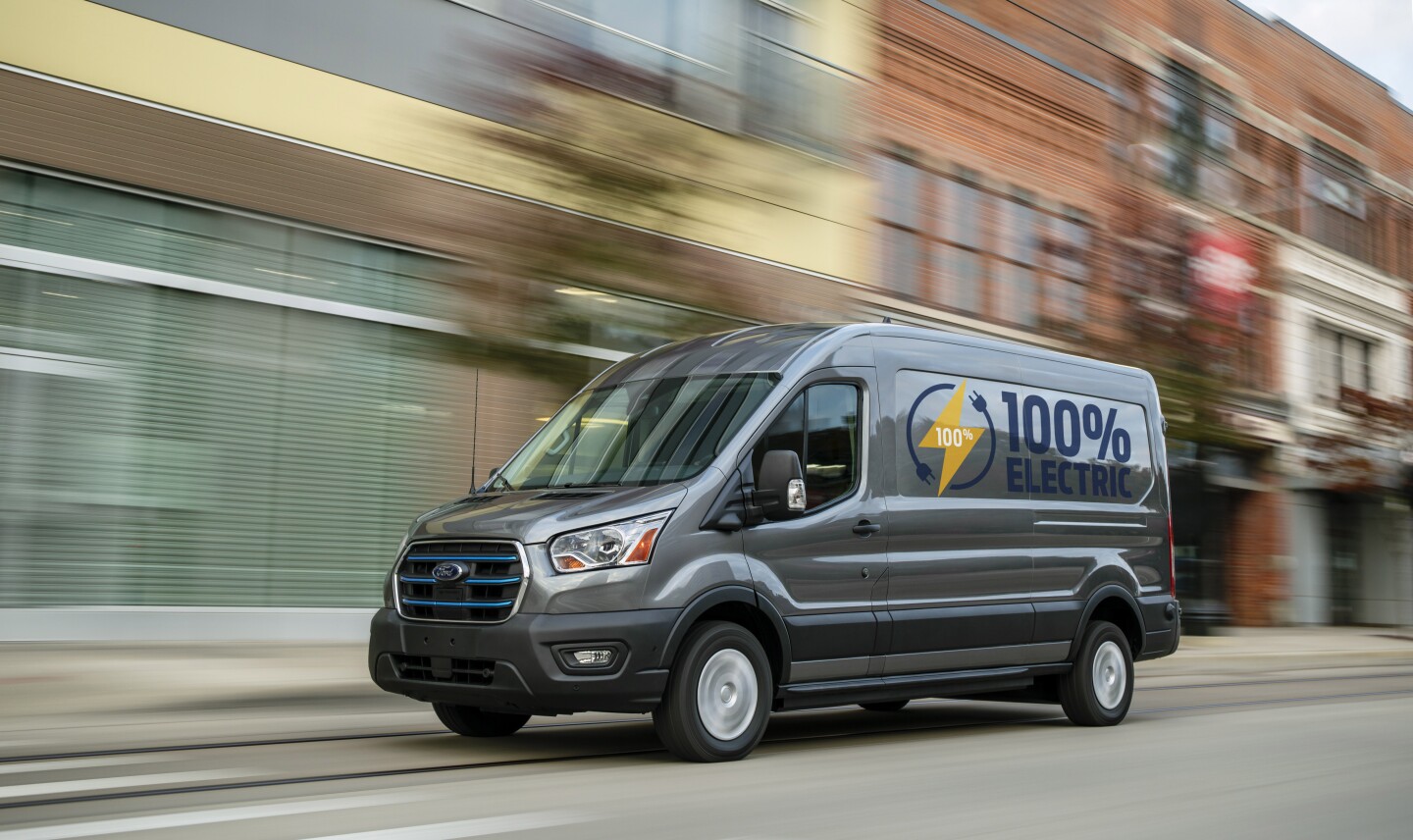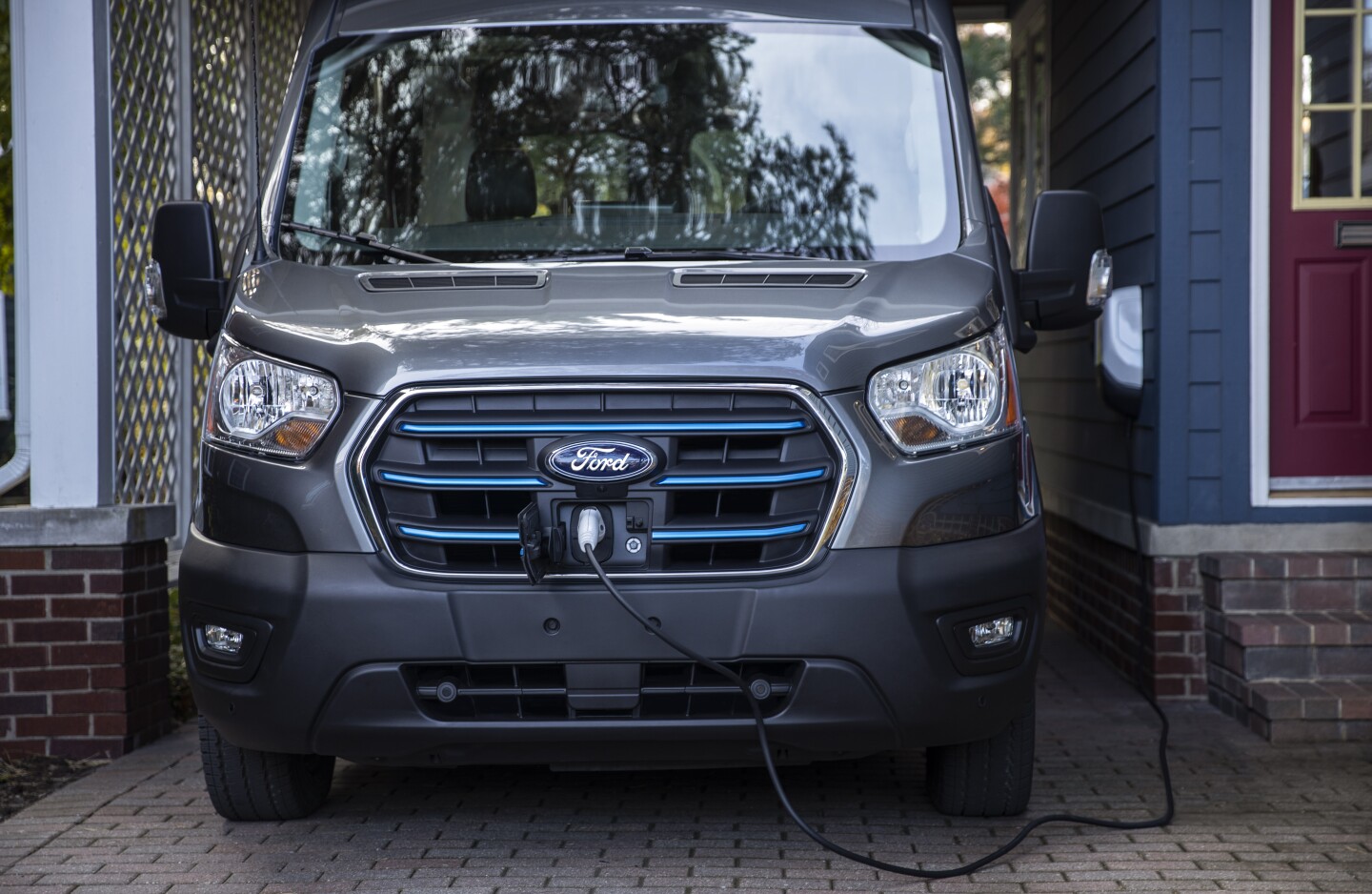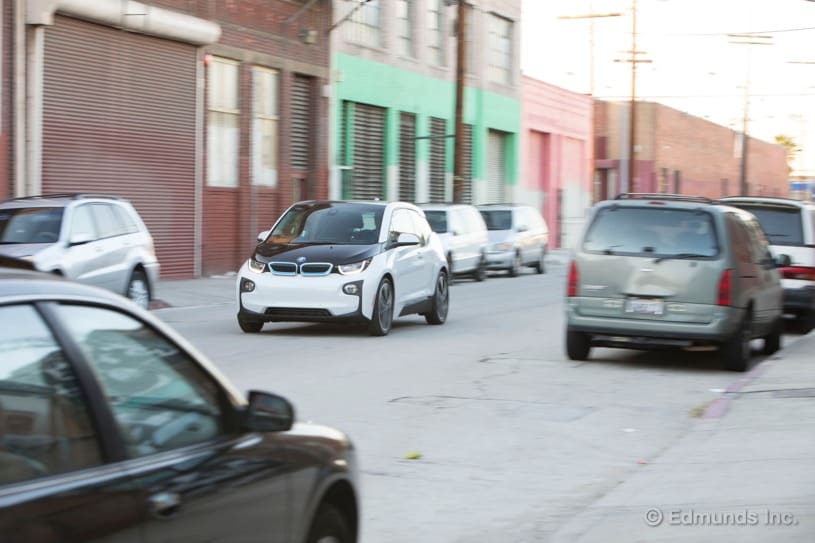Ford jolts the common cargo van to life with 126-mile electric Transit
Full-size cargo vans like the Mercedes Sprinter, Volkswagen Crafter and Fiat Ducato have been going electric one by one over in Europe, but big vans are still almost entirely gas and diesel in the US. Ford is fixing to change that with the all-new E-Transit cargo van debuted on Thursday. Loaded with all the high-tech goodies electric car drivers love, the E-Transit will launch in a full lineup of sizes and flavors to help ease the burden of electric changeover for Ford’s commercial customers.
We’ve seen electric vans from smaller startups like Rivian, but Ford describes the new E-Transit as the first all-electric cargo van from a full-line automaker in North America. More importantly, the Transit is America’s best-selling commercial van by a country mile, having doubled the sales of the nearest competitor in 2019. So what better way to kickstart the electric van era?
“Ford is North America and Europe’s commercial truck and van leader, so the transition of fleet vehicles to zero emissions, especially for the fast-growing last-mile delivery segment, is critical to achieve our carbon neutrality goal by 2050,” explains Jim Farley, Ford president and CEO. “Ford is ready to lead the charge, starting with the all-electric Transit and all-electric F-150 on the way.”

Ford
Ford hasn’t gotten overly range-ambitious with its first electric van, using customer telematics data from 30 million miles traveled to try to pinpoint just the right range/price point. With an onboard 67-kWh battery tucked away in the floor, the low-roof E-Transit will deliver an estimated 126 miles (203 km) before needing a recharge.
E-Transit power comes from a rear-mounted electric motor that sends up to 266 hp and 317 lb-ft of torque to the rear wheels. Ford has optimized the van’s heavy-duty semi-trailing arm rear suspension for payloads up 3,800 lb (1,724 kg) or 4,290 lb (1,946 kg) on the cutaway chassis.
The E-Transit comes equipped with both AC and DC charging capabilities. Using a 115-kW-plus DC fast-charger, E-Transit drivers can expect about 30 miles of range for 10 minutes of charging. The included Ford Mobile AC charger works with both 120- and 240-V outlets.

Ford
With its compact e-drive and floor-mounted battery pack, the E-Transit offers the same cargo area dimensions and mounting points as ICE-driven Transits, promising a seamless switchover. The van remains compatible with available upfits, components and accessories from around the world.
Beyond spinning the wheels for 126 miles or so, the E-Transit battery pack can also be put to use at the worksite. Ford will offer an optional Pro Power Onboard package to let owners plug power tools and electrical equipment in and tap into the big battery for up to 2.4 kW of power.

Ford
The E-Transit standard equipment package brings along Ford’s SYNC 4 infotainment system with 12-in touchscreen, voice recognition and cloud-enhanced navigation. Those that activate the standard 4G LTE modem will gain access to dedicated EV services through the Ford Commercial Solutions portal. Standard and available driver-assistance features include Ford Co-Pilot360 with intelligent adaptive cruise control, lane-keeping system, and pre-collision assist with emergency auto-braking.
The American-market 2022 E-Transit will go into production at Ford’s Kansas City Assembly Plant in late 2021. It will be offered as a cargo van, chassis cab and cutaway chassis and will come in three body lengths and three roof heights. Pricing will start at $45,000 before destination/delivery for the cutaway variant, compared to the $30,635 base price of the 2020 Transit cutaway with 3.5-liter PFDi V6 engine. Ford is careful to point out the long-term benefits of e-vans, including an estimated 40 percent drop in maintenance costs over time.
The E-Transit follows the introduction of the Mustang Mach-E, set to arrive before year-end, in an electrification push that sees Ford spending a planned $11.5 billion through 2022. Ford will launch the much-anticipated electric F-150 in mid 2022.
Source: Ford








